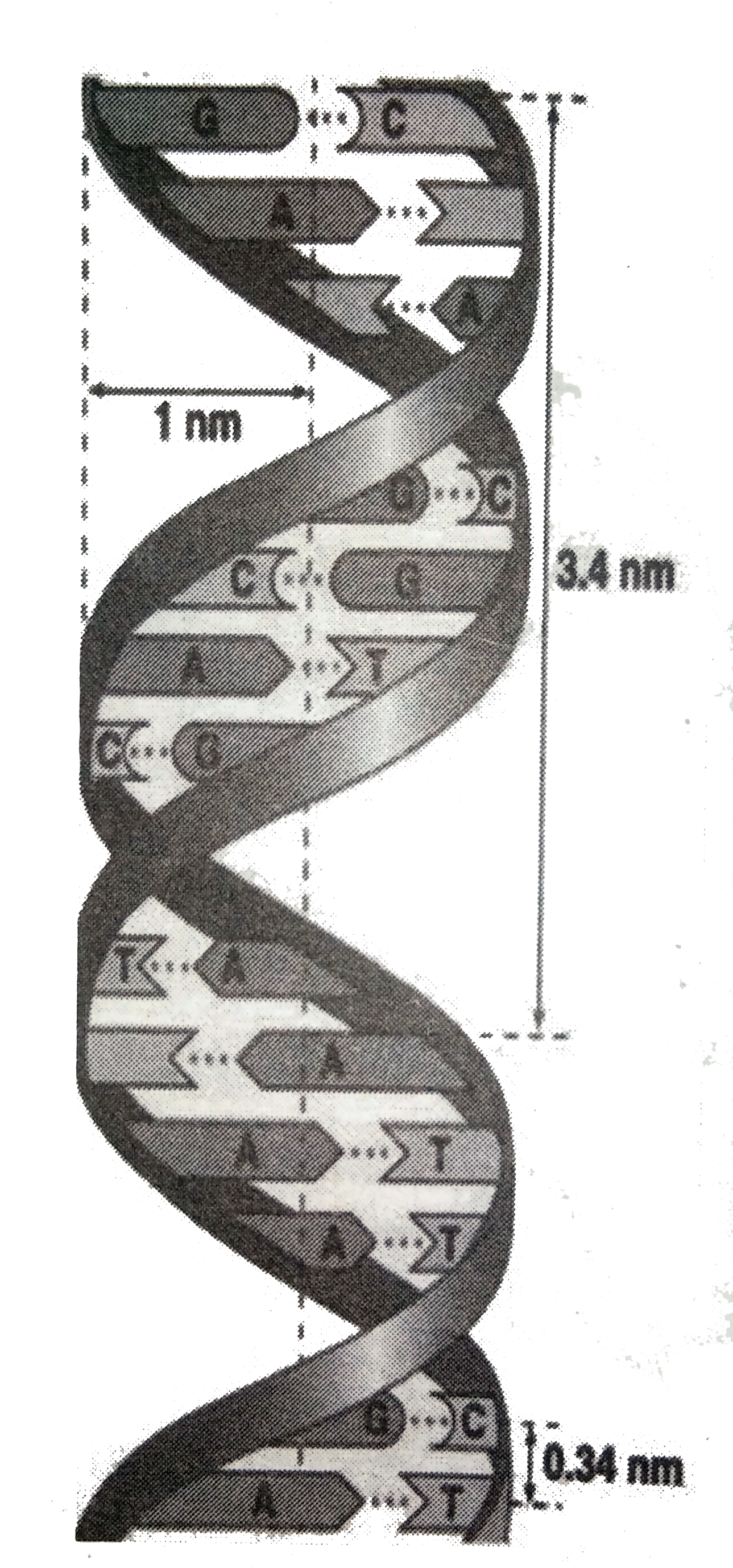How is the structure of DNA organized? What is the biological significance of DNA?Solution in Tamil
Video Solution
Text Solution
DNA is the heridetary material, as it contains the genetic information. It is a large molecule consisting of millions of nucleotides, so it is called a polynucleotide. Each nucleotide consists of three components.
(a) A sugar molecule - Deoxyribose sugar
(b) A nitrogenous base - There are two types of nitrogenous base in DNA they are
(i) purines (Adenine and Guanine)
(ii) Pyrimidines (Cytosine and Thymine)
(c ) A phosphate group - The poly nucleotide chains from a double helix, Nitrogenous bases in the centre are linked to sugar-phosphate units, which form the backbone of the DNA. Pairing between the nitrogenous bases is very specific and is always between purine and pyrimidine, linked by hydrogen bonds.
Adenine (A) links Thymine (T) with two hydrogen bonds [A=T]. Cytosine (C ) links Guanine (G) with three hydrogen bonds (C≡G). The hydrogen bonds between the nitrogenous bases make the DNA molecule stable. The nucleotides in a helix are joined together by phosphodiester bonds.
Biological significance of DNA:
(i) It is responsible for the transmission of heredity information from one generation to next generation.
(ii) It contains information required for the formation of proteins.
(iii) It controls the developmental process and life activities of an organism.

|
Similar Questions
How is the structure of DNA organized? What is the biological significance of DNA?
View Solutionwhat are biological significance of DNA.
View SolutionDNA வரிக்குறியிடுதலின் முக்கியத்துவம் யாது?
View SolutionHow does DNA express its biological information?
View SolutionExplain the significance of satellite DNA in DNA fingerprinting technique.
View SolutionStructural DNA that organizes the structure of chromosome, is located in
View SolutionDNA-এর গঠনগত একক কি?
View Solution
